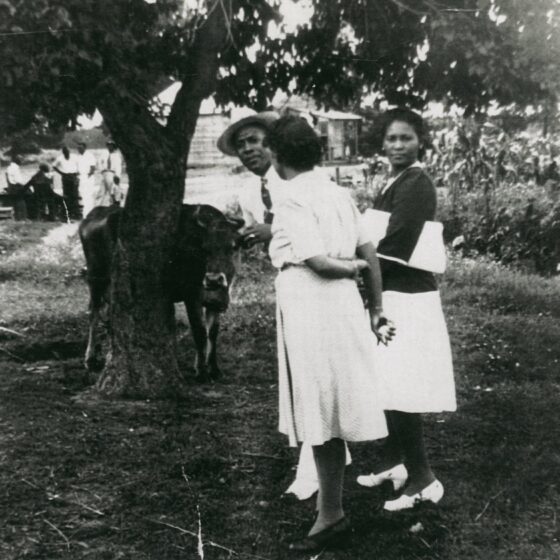About Five Row
Reynolda, as a working estate, existed in the context of pervasive racial inequality known as the Jim Crow period. The segregated community of Five Row, so named because it originally consisted of a row of five houses, was home to Reynolda’s African American farm workers and their families. Located parallel to Silas Creek, Five Row was situated out of sight of the bungalow and the other village buildings. A boarding house accommodated several families, while another large building served as the church and school. Unlike the houses in Reynolda Village, those in Five Row did not have electricity or indoor running water. Families made do with kerosene lamps and coal heaters. Water was drawn from several taps of artesian well water.
The majordomo for the Babcocks, Harvey Miller, grew up in Five Row: “They were frame houses. They had four rooms or five rooms, at that time you had your privies outside. But you did have piped water, but not in your house. I was about as far from–I could take a hose pipe and run water from the spigot up to my mother’s wash tub, two lengths of hose, so I wouldn’t have to carry it.”
Good wages lured many tenant farmers to join the Reynolda workforce. Ellis Pledger walked twenty miles a day to make $9 a week, three times what he received elsewhere. In 1916, he moved to Five Row with his wife, Flora. Despite the lack of electricity and running water, residents of Five Row remembered it as a close-knit community, as expressed by Flora Pledger: “But I thought it was the best place I’d ever seen. I loved it, I loved it. And if it was like—had the water and everything that I’ve got now—I’d rather be there than anywhere that I could be. I just naturally loved it. People was friendly and sociable and everything, and the children—you never had to whup ‘em, they was just good, like a family. We’d get along with one another, you never had to lock your door. You just go on and shut the door. I just come on out in the summertime when I went to work, I just come on out and let the door come shut. Not the wooden door, just the screen door, just cooling the house when you get back.”
Reynolda revealed video series
See all videosFrom the 1910s to the late 1950s, the segregated community of Five Row was home to Reynolda’s African American farm workers and their families.
A new type of Southern woman, Katharine Reynolds combined the traditional role of wife and mother with progressive practices on healthy living, education, and agricultural reform.

